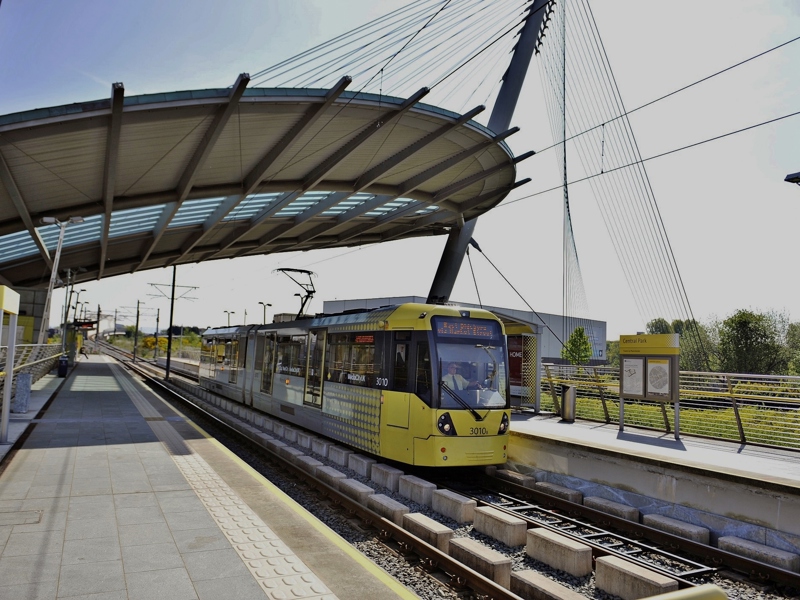In 2019, Amey produced its first white paper on mobility which is part of our programme of work examining the future of the UK infrastructure development and finance . Now, as we enter a new decade, and with just 30 years to achieve the government’s legally binding net zero target, we’ve produced our second white paper, this time looking at energy and heating and the radical, urgent steps that need to be taken to decarbonise the UK’s built environment.
Read our energy white paper here: https://www.amey.co.uk/media/6197/energy-white-paper-jan-2020.pdf
While transport represents 34% of the UK’s carbon emissions, heating is the next biggest emitter, representing 31% of total CO2 produced. There is an enormous opportunity for the UK to decarbonise how we heat our homes, businesses and public buildings but so far we’ve not grasped the opportunity. Why?
Because making a transition to decarbonised heating and breaking our decades-old reliance on fossil fuels is difficult and requires a radically different approach. What is needed is clear government policy that steers the market in the direction of low carbon technologies and clear investment models so that local authorities can engage with the market and investors can invest with confidence. There also needs to be more collaboration between local authorities and central government organisations so that the right decisions are made that suit the different needs of towns and cities across the country.
Clear policy that steers the market towards low carbon technologies
Take heat networks, for example: a proven, low carbon technology that delivers just 2% of the UK’s heat requirements currently. A clear, consistent policy from government backing this technology would enable better understanding and uptake, creating a market in which investors can invest with confidence. In a market like this, businesses, including SMEs, could deliver solutions, create jobs and wealth locally and consequently heat networks would become much more commonplace. Where heat networks are established and successful, for example in London, they are so because the planning rules are clear and the planning framework has been interventionist in mandating developers to install them. Recent government research backed by the Committee on Climate Change suggests that 18% of the UK heat demand could be supplied by heat networks by 2050. The size of the opportunity is immense if we can get the business models and incentives right.
Business models that create a market and build confidence
Decarbonising our heating infrastructure will require significant, long-term funding. A 2018 report for the National Infrastructure Commission cited the cumulative additional cost to 2050 being in the range of £120-300 billion. The size and scale of the investment required means it is essential that local authorities and government departments use business models that encourage a plethora of market entrants, which will lead to strong competition that will drive down prices and deliver technical innovation. Achieving net zero by 2050 will require a range of workable business models, with central government direction, allowing local authorities to get the best value from the market.
Less fixation with balance sheet treatments
With the well documented controversies around some PFI projects, confidence between the public and private sectors has been eroded. Trying to ensure private sector concessions are off balance sheet in other infrastructure sectors has led to inflexible contracts, too much risk transfer and the inability to adopt models which are more collaborative between the public and private sectors. Amey believes that past mistakes in balance sheet treatment of infrastructure projects need to be avoided in energy and heating infrastructure. Regardless of balance sheet treatment, the sole focus should be on getting the best out of the sector – value for money and a genuine backing of low carbon technologies.
People power
Considering the scale of the challenge ahead, it can be tempting to think of it as a government problem and not one that we as consumers need to confront. The reality is that 84% of the UK population (23 million properties) use gas and 1.6 million homes use oil to heat their homes. Yes, the change to clean energy and heating will be driven by central government policy. However, we as consumers need to demand much more rapid change of our policymakers in government. As householders, we need to ask more questions and be much more demanding of developers, energy contractors and heat suppliers about what clean, sustainable, low carbon technologies they can deliver right now.
The countdown to 2050 is on. We have less than 30 years to deliver our net zero commitments. 2020 needs to be the year when urgent, radical change takes place to meet these commitments and to overcome the climate emergency.
Stay connected with us in person and online. #betterfuture #amey #socialvalue #climateemergency
*The energy white paper roundtable event, working with Partnerships Bulletin, took place on 17 October 2019 and was attended by participants from across the public and private sectors:
- Susannah Stock, Director, Infrastructure Debt, Aviva
- Stuart Bowman, Development Director, Breathe Energy
- Ken Hunnisett, Heat Networks Investment Management lead, Triple Point
- Maj Gen Duncan Capps, Commander Regional Command, MOD
- Graeme Hamilton, Managing Director, Breathe Energy
- Mike Reynolds, Managing Director, Vattenfall Heat
- John Saunders, Investment Director and Head of HNDU, Department for Business, Energy & Industrial Strategy
- Andy Compton, Energy Systems Catapult
- Charlotte Owen, Director, The Association for Decentralised Energy
- Marcia Poletti, Associate Partner, Networks Strategy & RIIO2 Policy Director, Systems & Networks, Ofgem
- Donald Johnstone, Assistant Head Sustainability and Utilities, Army Basing and Infrastructure
- Fiona Chisholm, Partner, PwC
- Alasdair Young, Partner, BuroHappold
- John Nangle, Crown Commercial Lead for Energy, Cabinet Office
- Richard McKinney, Director Regional Delivery, Defence Infrastructure Organisation
- Paul Davies, Chair, Carbon Capture and Storage Advisory Group
- Asif Ghafoor, Managing Director, Amey Investments
- Nick Maggs, Business & Development Director, Amey Investments
- Rosie Llewellyn, Associate Director, Amey Investments
- Jeremy Bungey, Commercial Consultant, Amey Investments
- Amanda Nicholls, Managing Editor, Partnerships Bulletin
